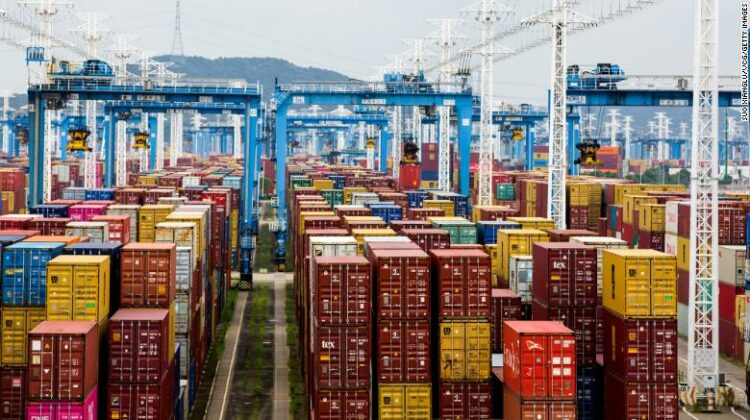
Container shipping demand bounce not quite what it seems
LONDON : A sluggish last two years has been left behind according to consultancy MSI in its monthly liner shipping report for April, but the devil is in the detail as figures for early 2024 skewed by sluggish year-on-year comparisons.
According to MSI demand data for the first quarter of 2024 showed strong year-on-year growth “across the board” in both mainline and non-mainline trades, with MSI’s global throughput index rising to its highest level in three years, reaching 113.05 in February, which shows “a synchronised volume rebound around the world.”
Weak 2023 volumes on the Pacific westbound to the US west coast meant that growth in these trades was expected, however, the US West Coast bounce has been greater than anticipated said MSI.
“US imports from East Asia grew by an impressive 30.4% in February and 23.6% in 2M 24 [the first two months of this year]. Moreover, port data in March continued this strong performance,” said MSI, which said imports in nine of the top ten US ports increased collectively by 18.4% year-on-year. Vancouver and Prince Rupert volumes followed the same pattern with a 24.9% boost year-on-year.
In addition, MSI said that “resilient” consumer spending and low inventories, coupled with a rebound in the US housing market will drive further growth.
“We have now upgraded our forecast for this trade notably and expect full-year growth of 7.5% in 2024,” said MSI.
Xeneta chief analyst Peter Sand warned, however, that these figures were compared to weak volumes in early 2023 and an underlying overcapacity which is masked by the Red Sea crisis.
As a result, Sand said Xeneta believes global growth will be limited to around 2.5%-3% for this year.
“On the Pacific the trade fell two years in a row, including by 4.4% in 2023, so growth of 7.5% may not bring the Pacific eastbound trade back to 2021 levels,” explained Sand.
Asia to Europe trade growth has also seen a bounce, but with high growth rates in the second, third and fourth quarters of last year MSI expects that bounce to be nipped in the bud.
February this year saw 17.8% growth in European trade volumes, year-on-year, and 11.5% in the first two months but with “sluggish GDP and consumer spending growth” in western Europe MSI forecasts only a 4.2% growth in the Asia to Europe trades this year.
Conversely, exports from Europe to the US appear to have turned around with the first growth in a year recorded in February, 7.0%, MSI forecasts a marginal growth in the Atlantic trade in the first quarter, but that his growth of around 5.5% will be sustained throughout the rest of 2024.
Intra-Asia volumes have also shown healthy increases of around 6.1% in Q4 last year and 6.5% in the Q1 this year and MSI expects these trades to continue to grow at a steady 5% for the rest of this year.
Exports out of Asia to Africa, Latin America, Oceania and the Middle East and Indian Subcontinent have also shown significant growth, 22-30%, in the first two months of this year compared to the same period of 2023.
“Although these trades are not expected to register the explosive growth rates of 2023, we still project healthy growth [of] between 6% and 9% in 2024,” claimed MSI.
Elevated rates in both the Asia to Europe and Pacific eastbound trades have seen a decrease, on the Pacific of 9.1% month-on-month according to Xeneta figures for 23 April this year, but remain 108% higher than rates seen in mid-December.
On the European trades rates had slipped 5.8% month-on-month, but remained 120% higher than Xeneta’s December levels.
Sand again cautioned against too much optimism from these figures with the underlying growth in capacity and the Red Sea and Gulf of Aden crisis bolstering statistics that are being compared to low 2023 figures in the first two months of 2023.
“The fact that we are not even talking about the EU ETS shows that it has been dwarfed by other factors,” said Sand, who added, “We are not going to see a full year [2024] that will continue in the same way as the first two months of this year.”
Sand also noted that the global volume figures from Container Trade Statistics (CTS) are not due until next week and will likely change the complexion of the market again.
